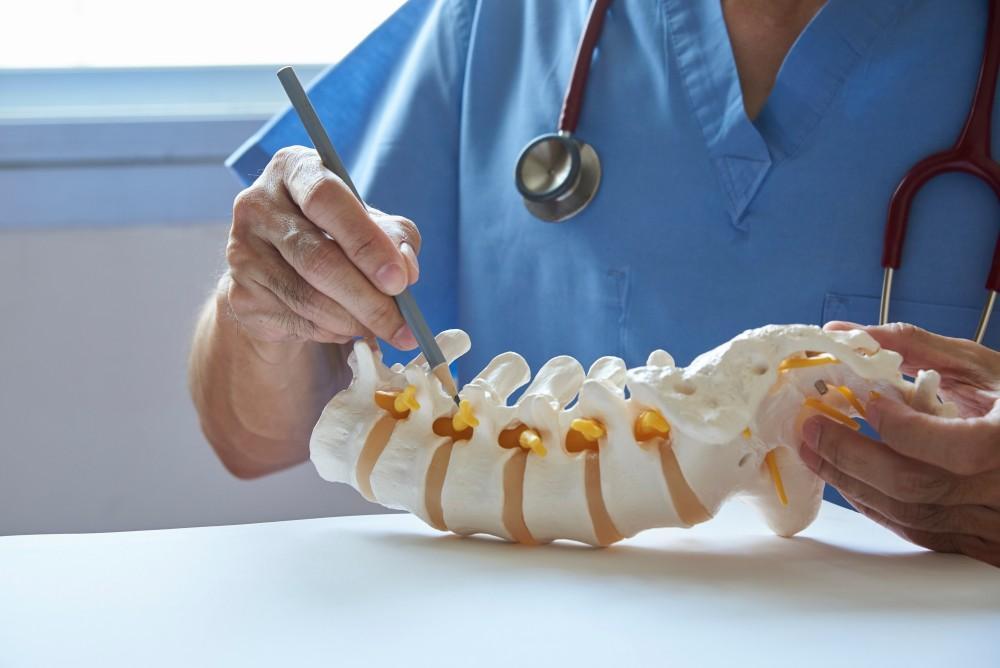
Signs You Need a Disc Replacement

Your spine is an amazing structure. It provides enough stiffness to let you walk erect but enough flexibility that you can bend, twist, and pivot. Much of that flexibility comes about because of the discs that fit between the bones, providing cushioning with movement and preventing bone-on-bone grating. If something should happen to the discs, you may need surgery to repair or replace them.
At Vertrae®, with locations in Dayton and Springfield, Ohio, board-certified neurosurgeon Dr. Kamal R. Woods and his team practice patient-centered, personalized care to get your life back to normal as quickly as possible. When conservative treatments fail to resolve spinal disc problems, we may recommend disc replacement surgery. Here’s what you need to know.
A brief lesson about the spine
The spine is divided into four parts:
- Cervical spine (neck)
- Thoracic spine (upper- and mid-back)
- Lumbar spine (lower back)
- Tailbone (sacrum and coccyx)
It contains 24 interlocking bony vertebrae, each separated by a soft intervertebral disc that acts as a shock absorber and a pivot when you move. Each disc has two parts:
- Annulus fibrosus: the tough, circular exterior formed from concentric sheets of collagen fibers
- Nucleus pulposus: the inner core, containing a loose fibrous network suspended in a mucoprotein gel
The vertebrae and intervertebral discs form the spinal column, which surrounds and protects the spinal canal. Nerves run from the brain through the canal, exiting the spine and traveling to peripheral regions like the arms and legs.
If any of the discs lose strength and flexibility, the whole thing can bulge, or the annulus can tear, allowing the extruding gel to impinge on spinal nerves. This causes a range of painful and potentially debilitating symptoms.
What happens when discs go bad?
As you age, your spinal discs begin to dehydrate and become stiffer, making them less able to adjust to compression. The dehydration creates instability, and the inflammatory proteins in the nucleus leak out of the disc space, inflaming the nerve fibers around it.
In addition, routine wear-and-tear over time — or even a twisting injury — can lead to degenerative disc disease (DDD). In this condition, the discs no longer function, and bone grinds against bone, creating inflammation and pain.
Since the spinal discs have no blood supply, they don’t have a way to repair themselves, and the pain created by the damage can last for years.
When a disc degenerates, it can lead to the onset of additional spinal conditions, such as:
- Spinal stenosis: a narrowing of the spinal canal that leads to nerve root or spinal cord impingement
- Osteoarthritis in the spine: wear-and-tear changes in the facet joints at the back of the spine
- Spondylolisthesis: one vertebral body slips forward on another due to facet joint degeneration
DDD typically presents with low-level chronic pain mixed with intermittent episodes of more severe pain. In some cases, it also causes weakness, numbness, a decreased range of motion, and hot, shooting pains into the arms or legs (radicular pain). Sciatica, which is an impingement on the Lumbar-5 or Sacral-1 nerves, is a typical example of radicular pain in the legs.
The disc replacement
The symptoms above all indicate you may need disc replacement surgery. Also known as arthroplasty, the procedure replaces damaged and worn-out spinal discs with artificial discs. The goal is to relieve pain while maintaining a more normal range of motion than is achieved with a spinal fusion, where the disc is removed, and the adjacent vertebrae are joined together by a bridge of bone. Disc replacement surgery also creates less stress on your remaining discs than traditional methods.
If you’re struggling with back pain, it’s time to come in for an evaluation to determine the health of your spine. Call us at the location nearest you, or book your consultation online. We’re here to help.
You Might Also Enjoy...


4 Benefits of Outpatient Spine Surgery

Am I a Candidate for Kyphoplasty?

Pulled Muscle vs. Pinched Nerve: What's the Difference?

4 Subtle Signs of Sciatica

